
The University of the West of England, Bristol is a public research university, located in and around Bristol, England, which received university status in 1992. In common with the University of Bristol and University of Bath, it can trace its origins to the Merchant Venturers' Technical College, founded as a school in 1595 by the Society of Merchant Venturers.
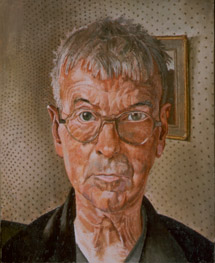
Sir Stanley Spencer, CBE RA was an English painter. Shortly after leaving the Slade School of Art, Spencer became well known for his paintings depicting Biblical scenes occurring as if in Cookham, the small village beside the River Thames where he was born and spent much of his life. Spencer referred to Cookham as "a village in Heaven" and in his biblical scenes, fellow-villagers are shown as their Gospel counterparts. Spencer was skilled at organising multi-figure compositions such as in his large paintings for the Sandham Memorial Chapel and the Shipbuilding on the Clyde series, the former being a First World War memorial while the latter was a commission for the War Artists' Advisory Committee during the Second World War.

Glenside campus is the home of the Faculty of Health and Applied Sciences at the University of the West of England (UWE), in Bristol. It is located on Blackberry Hill in the suburb of Fishponds. Its clocktower is a prominent landmark, visible from the M32 motorway. Several of the buildings on the site are Grade II listed.
Glenside is a suburb in the local government area known as the City of Burnside, Adelaide, South Australia. The suburb is 4.9 kilometres south-east of the Adelaide city centre, home to 2,422 people in a total land area of 1.40 km2.

The Stanley Spencer Gallery is an art museum in the South of England dedicated to the life and work of the artist Stanley Spencer. It was opened in 1962 and is located in the Thameside village of Cookham, Berkshire where the artist was born and spent much of his life. The gallery's collection comprises over 100 paintings and drawings, which includes a number of long-term loans. Exhibitions are mounted on a regular basis and include loans from other public institutions and public collections.
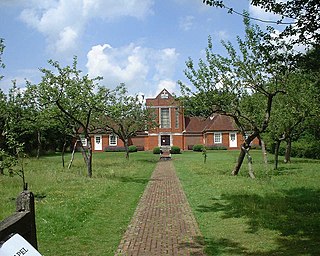
Sandham Memorial Chapel is in the village of Burghclere, Hampshire, England. It is a Grade I listed, 1920s decorated chapel, designed by Lionel Godfrey Pearson. The chapel was built to accommodate a series of paintings by the English artist Stanley Spencer. It was commissioned by Mary and Louis Behrend (1881–1972) as a memorial to Mary's brother, Lieutenant Henry Willoughby Sandham who died of illness contracted in Macedonia after the First World War. The chapel is surrounded by lawns and orchards, with views of Watership Down.
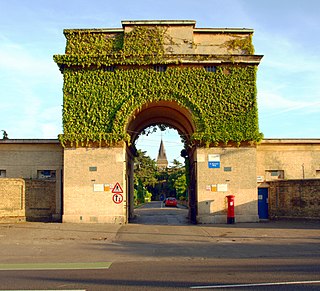
St Bernard's Hospital, also known as Hanwell Insane Asylum and the Hanwell Pauper and Lunatic Asylum, was an asylum built for the pauper insane, opening as the First Middlesex County Asylum in 1831. Some of the original buildings are now part of the headquarters for the West London Mental Health NHS Trust (WLMHT).

Moulsford is a village and civil parish in South Oxfordshire. Before 1974 it was in the county of Berkshire, in Wallingford Rural District, but following the Berkshire boundary changes of that year it became a part of Oxfordshire. Moulsford is on the A329, by the River Thames, just north of Streatley and south of Wallingford. The west of the parish is taken up by the foothills of the Berkshire Downs, including the Moulsford Downs. Moulsford Bottom and Kingstanding Hill are traditionally associated with King Alfred and the Battle of Ashdown.
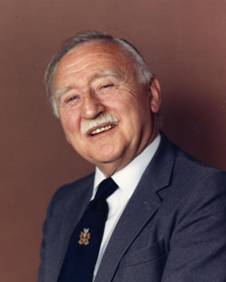
Dr. Donal F. Early was an Irish psychiatrist.
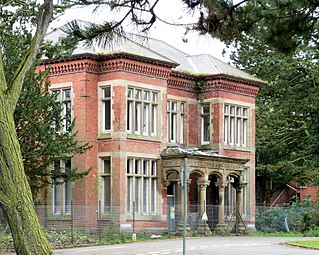
Whittingham Hospital was a psychiatric hospital in the parish of Whittingham, near Preston, Lancashire, England. The hospital opened in 1873 as the Fourth Lancashire County Asylum and grew to be the largest mental hospital in Britain, and pioneered the use of electroencephalograms (EEGs). It closed in 1995.

Gilbert Spencer was a British painter of landscapes, portraits, figure compositions and mural decorations. He worked in oils and watercolour. He was the younger brother of the painter Stanley Spencer.

Beaufort War Hospital was a military hospital in Stapleton district, now Greater Fishponds, of Bristol during the First World War. Before the war, it was an asylum called the Bristol Lunatic Asylum, and after the war it became the psychiatric hospital called Glenside Hospital.

St Augustine’s Hospital was a psychiatric hospital in Chartham, Kent, England. It was founded as the second, or East, Kent County Asylum in 1872. In 1948 the hospital became part of the National Health Service and was renamed St Augustine's Hospital. The hospital gained notoriety in the 1970s when it was the subject of a committee of inquiry into malpractice and mismanagement. St Augustine's Hospital closed in 1993 and the site is now occupied by housing, although a few of the original hospital buildings remain.

Knowle is a village with mainly 21st century shops and businesses in the Winchester district of Hampshire, England that sits high on the left bank of the Meon between the Southampton and Portsmouth conurbations. It is in the south of the civil parish of Wickham in which it ranks in population about 25% behind Wickham. Its nearest town is Fareham, adjoining an inlet of Portsmouth Harbour approximately 3 miles (4.8 km) south-east.

'The Dower House' , Stoke Park is a dower house in Bristol, England. It is one of Bristol's more prominent landmarks, set on Purdown, a hill above the M32 motorway on the main approach into the city, and painted yellow.

Blackberry Hill Hospital is an NHS psychiatric hospital in Fishponds, Bristol, England, specialising in forensic mental health services, operated by the Avon and Wiltshire Mental Health Partnership NHS Trust. The hospital also offers drug and alcohol rehabilitation inpatient services, and is the base for a number of community mental health teams.

Whau Lunatic Asylum was a psychiatric hospital on the Oakley Farm Estate in Point Chevalier, Auckland, New Zealand. Built in 1865 on the Great North Road, it was one of the largest asylums in the Colony.
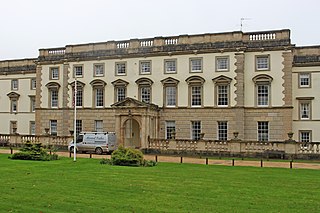
Brislington House was built as a private lunatic asylum. When it opened in 1806 it was one of the first purpose-built asylums in England. It is situated on the Bath Road in Brislington, Bristol, although parts of the grounds cross the city boundary into the parish of Keynsham in Bath and North East Somerset.
Paul Gough is a British academic, writer, painter, broadcaster and the current Principal and Vice Chancellor of Arts University Bournemouth.


















